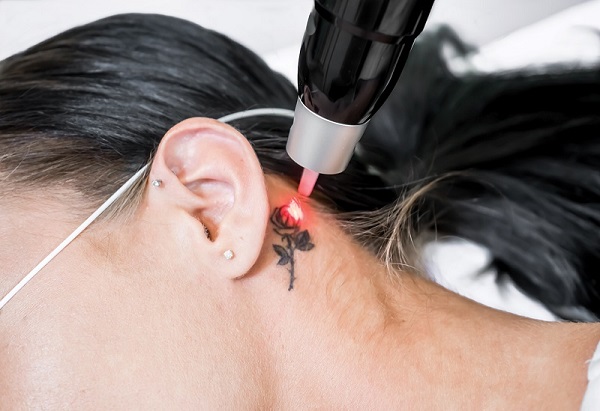KEN BARAT, LASER SAFETY SOLUTIONS
Operating a chain saw poses an inherent risk that even the most experienced user is aware of and accepts. But what if the tool were a laser-based rust remover?
These hand-held systems can have output powers between 100 and 2000 W. An operator must simply aim the laser at a rusted surface of up to three feet away and switch the system on. The advantage of using a laser over getting down and scrubbing on one’s knees is clear, which explains the growing adoption of the hand-held systems and other turnkey laser devices in consumer applications.
Gone are the days when it was necessary to have a team of graduate students or highly trained technicians to keep a laser instrument running properly. Today, consumers can simply power the devices up and turn them on to achieve a level of laser output that users could have only dreamed of in the 1980s. Although this ease of operation is a significant advancement in technology and user convenience, it raises an important safety question: Do the users understand the potential risks that laser devices present, or do they assume that the product safety labels remove any of the danger involved?
Rust removal is only one application for which lasers are being used by comparatively untrained operators. Other applications include tattoo removal, forensics — such as fingerprint detection and bullet tracing — art restoration, surface cleaning, additive manufacturing, laser cutting and etching, detection of gas leaks, bird avoidance systems, dermatology treatments, and microwelding.
The Center for Devices and Radiological Health sets rules that any laser system or product sold in the U.S. must meet, regardless of where it is manufactured. Nations worldwide set similar product requirements, based on standard IEC 60825-1. Although these requirements encourage various safety features for laser products, they have little effect on whether safe practices are a consideration for end users, who may not understand the inherent risks.
The three most overlooked hazards with these systems are fume generation, reflected beams, and direct beam exposure. Consider, for example, the use of a laser turnkey system to remove rust. The operator might handle the tool according to the product safety guidelines, but not consider the fact that it is being used in an indoor setting that lacks a system to capture or exhaust the fumes.
The risks of laser turnkey systems vary from one instrument and product to the next. The potential risks from a dental laser or a bird mitigation system are much different, for example, than the risks of a fingerprint detector, rust remover, or a trophy etching machine. They all have open beams, but some lasers are used in a free-hand approach whereas others are fixed in position.

Laser tattoo removal. Courtesy of iStock.com/Joyce Grace.
There are turnkey laser products that qualify as Class 1 systems during normal use, and, therefore, they present minimal risks to users. The two most common examples are 3D printers and laser cutters that have use in commercial settings, as well as in the home hobby market. But they do pose safety concerns if, during maintenance or alignment operations, interlocks are bypassed. Another concern is the potential for deliberate overriding
of interlocks to accommodate larger workpieces.
Companies and shops that use laser equipment often assign a safety officer as a matter of principle, but laser safety demands a level of commitment and
expertise that goes well beyond such roles, and these individuals might be wholly ignorant about the safety concerns of turnkey laser systems. There are
situations in which laser safety is completely based on the salesperson’s guidance.
Fume mitigation and consistent use of personal protective eyewear for both medical professionals and patients in medical settings, such as dental and skin resurfacing units, are key issues.
The aim here is not to represent devices as more dangerous than they are, but
rather to help users mitigate the risks while operating them. A few basic practices will help foster safer use of these tools.
Users and safety officers should review the user manual for any turnkey system that contains a laser. Product suppliers
often post videos on the use of their devices, which should be viewed. More importantly, safety officers must observe how users operate the equipment, with
an eye toward safety concerns and improvements, and they should consider factors such as personal protective
equipment for eyewear and clothing, along with ergonomics, fume control, reflection risk, and documentation of work procedures.
An overwhelming number of these turnkey laser systems fall outside of the typical uses described in existing laser standards or regulations. Updates to
ANSI standards for laser use tend to take 7 to 10 years. This equates to eons in comparison to the pace of new advancements in laser technology and products. Consider, for example, how quickly lidar has developed. U.S. federal and state regulations are nowhere close to catching up with the technology that has emerged.
As laser technology continues to advance, more laser turnkey systems will venture into the commercial domain. In a few short decades, hand-held laser tools will have evolved from sources emitting
a few milliwatts to Class 4 systems that are plug and play.
Such turnkey systems offer many
advantages over other technologies and the traditional efforts that they simplify, but they also require more attention to safety. An axe, for example, is a rather simple tool to use and understand, though it can be a real danger if used improperly. The same applies to turnkey laser systems. Please keep your remaining eye out for them.